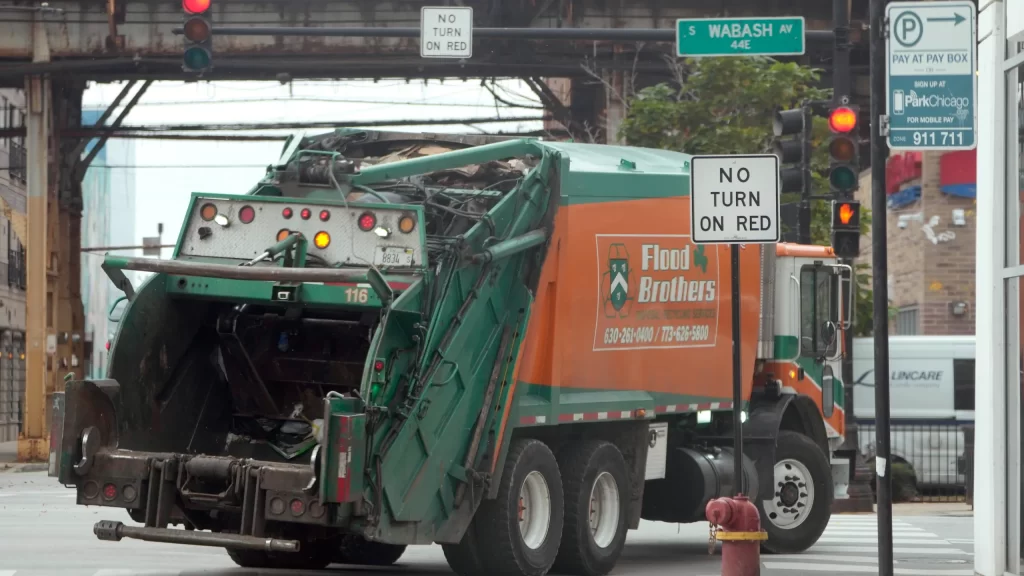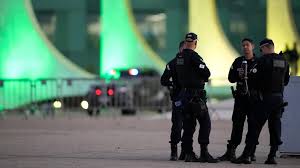
Sophee Langerman was on her way to a bicycle safety rally in Chicago’s Lakeview neighborhood in June when a car turning right rolled through a red light and slammed into her bike, which she was walking off the curb and into the crosswalk.
The car was moving slowly enough that Langerman escaped serious injury, but the bicycle required extensive repairs. To Langerman, it’s another argument for ending a practice that almost all U.S. cities have embraced for decades: the legal prerogative for a driver to turn right after stopping at a red light.
A dramatic rise in accidents killing or injuring pedestrians and bicyclists has led to a myriad of policy and infrastructure changes, but moves to ban right on red have drawn some of the most intense sentiments on both sides.
Washington, D.C.’s City Council last year approved a right-on-red ban that takes effect in 2025. New Chicago Mayor Brandon Johnson’s transition plan called for “restricting right turns on red,” but his administration hasn’t provided specifics. The college town of Ann Arbor, Michigan, now prohibits right turns at red lights in the downtown area.
San Francisco leaders recently voted to urge their transportation agency to ban right on red across the city, and other major cities such as Los Angeles, Seattle and Denver have looked into bans as well.
But Jay Beeber, executive director for policy at the National Motorists Association, an advocacy organization for drivers, called it a “fallacy” to assume such blanket bans would make streets safer.
He cited an upcoming study by his association that analyzed California crash data from 2011-2019 and found that drivers turning right on red accounted for only about one pedestrian death and less than one bicyclist death statewide every two years.
“What’s really behind this movement is part of the agenda to make driving as miserable and as difficult as possible so people don’t drive so much,” Beeber said.
Safety advocates counter that official crash reports are often mislabeled, undercounting the dangers.
The United States is one of few major countries that generally allow right turns on red. Concerned that cars idling at stop lights could compound an energy crisis, the U.S. government warned states in the 1970s that they could risk some federal funding should cities prohibit right on red, except in specific, clearly marked areas. Although another energy-conscious provision capping speed limits at 55 mph has long been abandoned, right on red has endured.
“It’s an example of bad policy,” said Bill Schultheiss, director of engineering at Toole Design Group, which consults with public transportation agencies. “It made sense in the context of the gas crisis, but it was way oversold on what it would achieve. It’s a mandate that doesn’t consider the full consequences.”
Right on red has never been allowed across most of New York City, where large signs alert Manhattan’s visitors that the practice is prohibited there. But it was the default policy practically everywhere else in the U.S. until last year’s vote in the nation’s capital.
Safety advocates who pushed for the change in Washington, D.C., are bracing for blowback from drivers, particularly if the city also allows the so-called Idaho Stop in which cyclists are permitted to go through a red light after stopping to make sure the coast is clear.
“There are just some battles, in terms of public opinion, where you have to be content to sacrifice that for the safety of the people,” said Jonathan Kincade, communications coordinator at the Washington Area Bicyclists Association. “It doesn’t make sense to treat cars and bikes the same. They’re not the same vehicle, and we’ve seen the outcomes of that.”
Critics argue that banning right on red will not only inconvenience motorists but also slow down commuter buses and deliveries. The United Parcel Service hasn’t taken an official position on right on red but has long directed its drivers to avoid left turns whenever possible, viewing them as inefficient.




